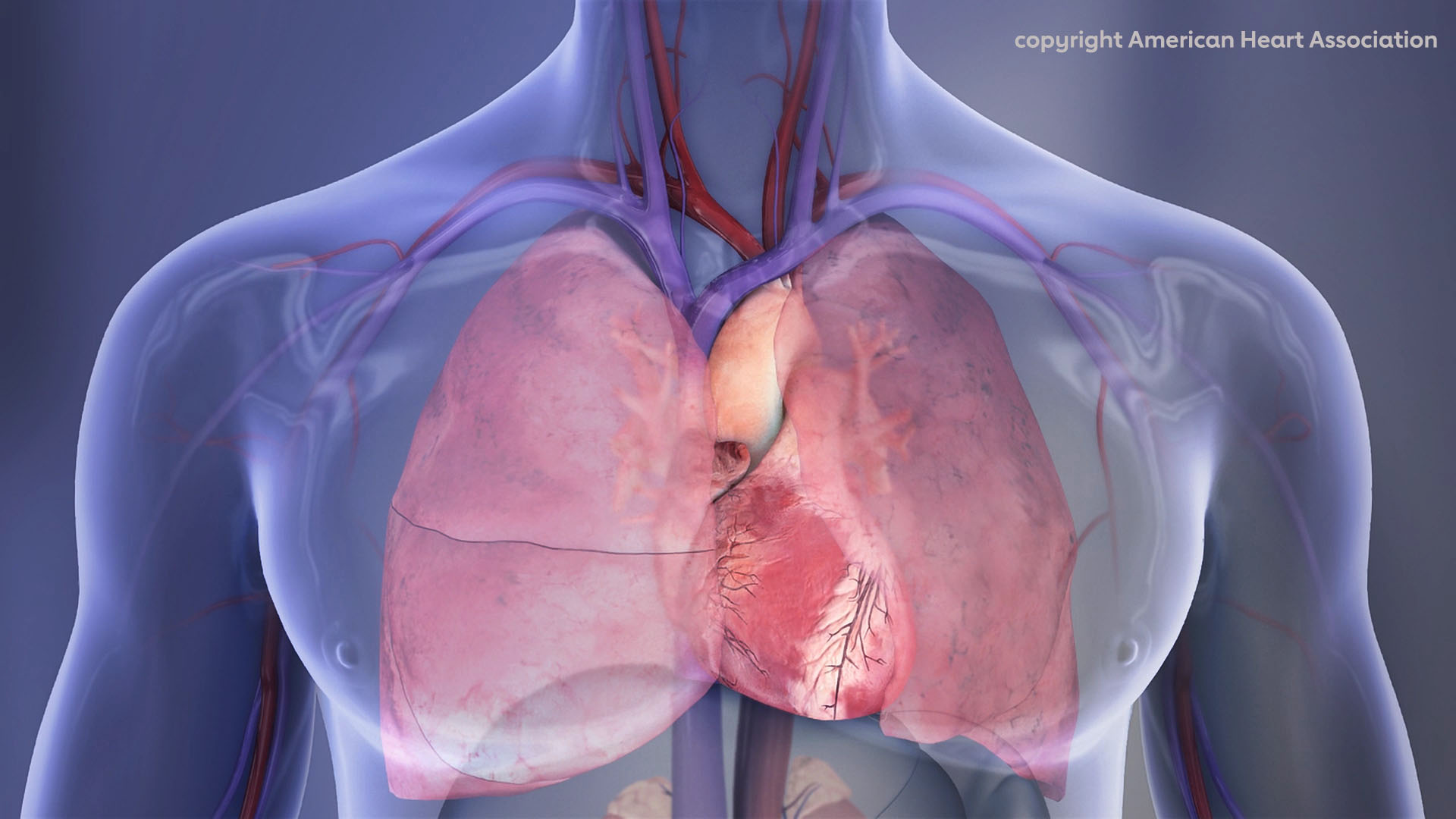Latest research redefines neurodevelopmental risks, outcomes for congenital heart disease
[ad_1]
Statement Highlights:
- A new American Heart Association scientific statement updates more than a decade of research identifying, managing and preventing neurodevelopmental delays and disorders among people with congenital heart disease.
- The new statement outlines important changes since the Association’s last statement in 2012, such as revised criteria to determine which children and adults are at high risk for neurological developmental delays and disorders, as well as an updated list of factors that may increase the risk.
- Critical next steps include research on how to prevent and reduce the effects of common neurological developmental issues that may affect learning, emotions and behaviors throughout life.
 Embargoed until 4 a.m. CT/5 a.m. ET Thursday, Feb. 22, 2024
Embargoed until 4 a.m. CT/5 a.m. ET Thursday, Feb. 22, 2024
(NewMediaWire) – February 22, 2024 – DALLAS — More than a decade of new knowledge about neurodevelopmental risk in people with congenital heart disease has changed the thinking about who is most at risk and the factors that impact neurological development, learning, emotions and behaviors, according to a new American Heart Association scientific statement published today in the Association’s flagship, peer-reviewed journal Circulation.
Congenital heart disease, defined as structural abnormalities in the heart or nearby blood vessels that arise before birth, is the most common birth defect. While advances in treatment have helped more than 90% of people with congenital heart disease in developed countries live to adulthood, the risk of neurodevelopmental issues when individuals have a more severe form of congenital heart disease has not meaningfully improved.
The new scientific statement, “Neurodevelopmental Outcomes for Individuals With Congenital Heart Disease: Updates in Neuroprotection, Risk-Stratification, Evaluation, and Management,” describes the significant advancement in understanding the impact of congenital heart disease on an individual’s development, learning, emotions and behaviors throughout childhood and adulthood.
“Neurodevelopmental difficulties are among the most common and enduring complications faced by people with congenital heart disease. These difficulties can affect a person’s ability to function well at school, at work or with peers, and can affect health-related quality of life throughout childhood and into adulthood,” said Vice Chair of the writing statement group Erica Sood, Ph.D., a senior research scientist and pediatric psychologist at Nemours Children’s Health, Delaware Valley. “It is important for health care professionals and individuals with congenital heart disease and their families to understand how common neurodevelopmental difficulties are. It is also important to understand what places a person with congenital heart disease at high-risk for these difficulties, as well as how these difficulties can be prevented or managed.”
The statement includes updated guidance for health care professionals on how to identify which patients are at high-risk for neurodevelopmental difficulties and what type of evaluations may be helpful to better understand these difficulties. Optimizing neurodevelopmental outcomes through clinical care and research has become increasingly critical since more patients are surviving into adulthood.
The key findings of the statement include:
- The algorithm for risk stratification of people with congenital heart disease into high or low risk for developmental delays or disorders has been revised to reflect the latest research.
- The statement suggests health care professionals sequentially review three risk categories: Risk Category 1 includes patients with a history of cardiac surgery with cardiopulmonary bypass during infancy. Risk Category 2 is people with a history of chronic cyanosis, those with blue or purple discoloration due to low blood-oxygen levels, who did not undergo cardiac surgery with cardiopulmonary bypass during infancy. Risk Category 3 has two criteria. The first criterion for Risk Category 3 is a history of an intervention or hospitalization secondary to congenital heart disease in infancy, childhood or adolescence. The second criterion is the presence of one or more factors known to increase neurodevelopmental risk.
- The statement features an updated list of factors known to increase neurodevelopmental risk, including genetic, fetal and perinatal impact, surgical aspects of treatment and care, socioeconomic and family influences and factors related to growth and development. For example, genetic variants that may alter fetal development of the heart, brain and other organs cause up to nearly a third of congenital heart disease cases.
- There is a new section on emerging risk factors, such as abnormal placental development, prolonged or repeated anesthetic exposure and exposure to neurotoxic chemicals.
- In addition, there is a new section on neuroprotective strategies, including detection of congenital heart disease before birth, monitoring of brain blood flow and the delivery of oxygen, and functional support care, such as physical therapy, occupational therapy and speech-language pathology.
- The statement provides updated information about referral to age-based evaluation of people with congenital heart disease at high risk for developmental delay or disorder. The statement refers to guidance from the Cardiac Neurodevelopmental Outcome Collaborative, which recommends that children with congenital heart disease at high risk for developmental delay or disorders have neurodevelopmental assessments throughout infancy, childhood and adolescence.
- The statement also provides updated information about management of developmental delay or disorder in infants, children and adolescents, and a new section on management of neuropsychological deficits in adults.
“Reducing barriers that people with congenital heart disease and their families often face when trying to access neurodevelopmental supports and services, and ensuring sufficient research funding are priority areas for future policies,” said Chair of the statement writing group Bradley S. Marino, M.D., M.P.P., M.S.C.E., M.B.A., FAHA, chief of cardiology and cardiovascular medicine at Cleveland Clinic Children’s. “More research will result in a better understanding of how to prevent and manage neurodevelopmental conditions related to congenital heart disease, which will ultimately improve neurodevelopmental outcomes and health-related quality of life for people with congenital heart disease across their life span.”
This scientific statement was prepared by the volunteer writing group on behalf of the American Heart Association’s Council on Lifelong Congenital Heart Disease and Heart Health in the Young, and the Council on Cardiovascular and Stroke Nursing. American Heart Association scientific statements promote greater awareness about cardiovascular diseases and stroke issues and help facilitate informed health care decisions. Scientific statements outline what is currently known about a topic and what areas need additional research. While scientific statements inform the development of guidelines, they do not make treatment recommendations. American Heart Association guidelines provide the Association’s official clinical practice recommendations.
Additional members of the writing group are Jane W. Newburger, M.D., M.P.H., FAHA; Julia S. Anixt, M.D.; Adam R. Cassidy, Ph.D., L.P.; Jamie L. Jackson, Ph.D.; Richard A. Jonas, M.D.; Amy J. Lisanti, Ph.D., R.N., FAHA; Keila N. Lopez, M.D., M.P.H.; and Shabnam Peyvandi, M.D., M.A.S., FAHA. Authors’ disclosures are listed in the manuscript.
The Association receives funding primarily from individuals. Foundations and corporations (including pharmaceutical, device manufacturers and other companies) also make donations and fund specific Association programs and events. The Association has strict policies to prevent these relationships from influencing the science content. Revenues from pharmaceutical and biotech companies, device manufacturers and health insurance providers, and the Association’s overall financial information are available here.
Additional Resources:
About the American Heart Association
The American Heart Association is a relentless force for a world of longer, healthier lives. We are dedicated to ensuring equitable health in all communities. Through collaboration with numerous organizations, and powered by millions of volunteers, we fund innovative research, advocate for the public’s health and share lifesaving resources. The Dallas-based organization has been a leading source of health information for a century. During 2024 – our Centennial year – we celebrate our rich 100-year history and accomplishments. As we forge ahead into our second century of bold discovery and impact, our vision is to advance health and hope for everyone, everywhere. Connect with us on heart.org, Facebook, X or by calling 1-800-AHA-USA1.
###
For Media Inquiries: 214-706-1173
Samantha Chencharik: 214-706-1406, samantha.chencharik@heart.org
For Public Inquiries: 1-800-AHA-USA1 (242-8721)
heart.org and stroke.org
[ad_2]




